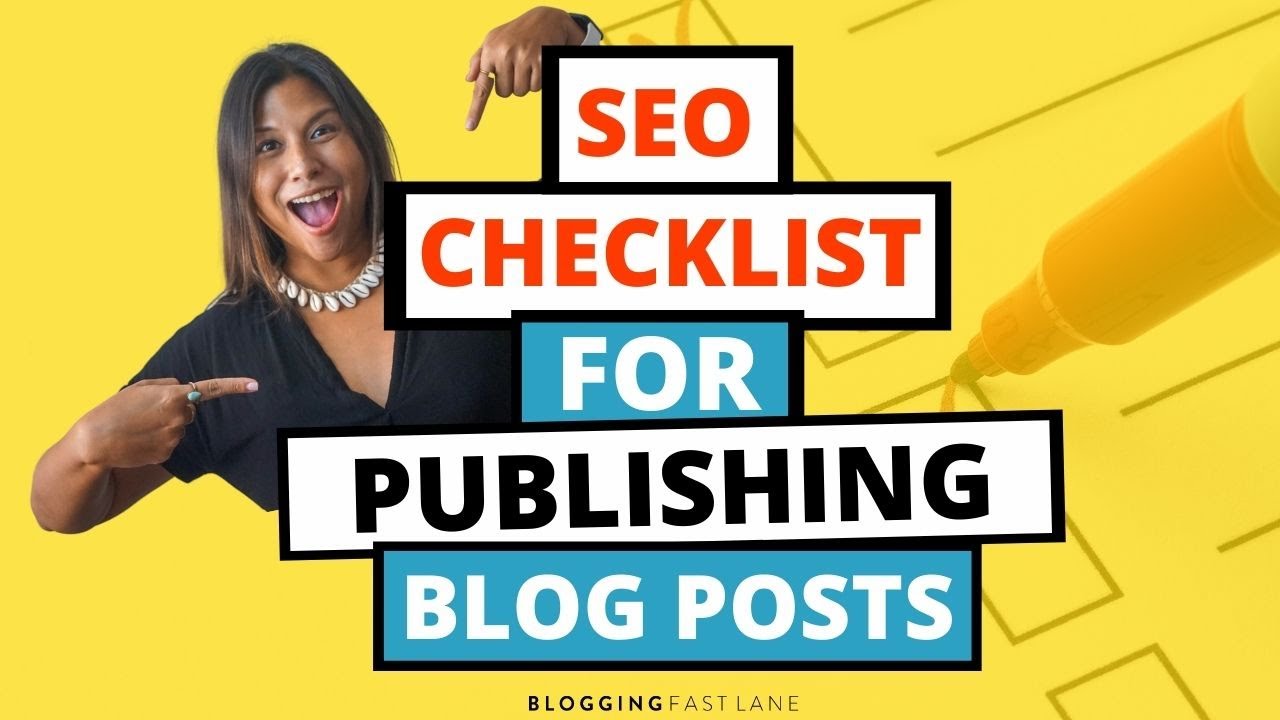In the fast-paced world of digital marketing, search engine optimization(SEO) plays a crucial role in driving organic traffic to your website. As an online contentcreator, it's essential to understand how tooptimize your content for better visibility and higher rankings on search engineresult pages (SERPs). By implementing certain SEO tweaks to improve your content before you hit publish, you can significantly improve your website's SEOand attract more visitors.
SEO Tweaks To Improve Your Content Before You Hit Publish
Let's explore eight effective ways to tweak your content for better SEO. From keyword research to optimizing meta tags, we'll cover a range of techniques that can help your content rank higher and reach a wider audience.
Conduct Thorough Keyword Research
Keyword research forms the foundation of any successful SEO strategy. It involves identifying the search terms and phrases that your target audience is using when looking for information related to your content. By understanding these keywords, you can create content that aligns with their needs and preferences.
Start by using keyword research tools such as Google Keyword Planner, SEMrush, or Ahrefs. These tools allow you to discover relevant keywords with high search volumes and low competition. Look for keywords that are closely related to your topic and have a significant search volume.
Once you have identified the keywords, strategically incorporate them into your content. Include them in your title tag, meta description, headings (H1, H2, H3), and within the body of your content. However, be careful not to overdo it. The keywords should flow naturally within your content and provide value to your readers.
Optimize Your On-Page SEO Elements
On-page SEO elements play a vital role in optimizing your content for search engines. These elements include the title tag, meta description, headings, URLs, and the content itself. Optimizing these elements ensures that search engines understand what your content is about and how relevant it is to specific search queries.
Start by optimizing your title tag. The title tag is the HTML element that defines the title of your webpage. It should accurately reflect the content of your page and include your target keyword. Keep it concise, compelling, and relevant.
Next, optimize your meta description. The meta description is a brief summary of your webpage that appears on the search engine result pages. It should entice users to click through to your page. Include your target keyword and make it engaging and informative.
Utilize headings (H1, H2, H3) to structure your content and make it more readable for both users and search engines. Use H1 for the main title of your page and H2 and H3 for subheadings. Incorporate your keywords naturally within these headings.
Ensure that your URLs are clean, descriptive, and include relevant keywords. A well-optimized URL gives search engines a clear indication of your page's content.

SEO Publishing Checklist: A Guide on What to Do Before You Publish a Blog Post
Create High-Quality, Engaging Content
Quality content is crucial for both user experienceand SEO. Search engines like Google prioritize content that satisfies user intentand offers a great user experience. When creating content, focus on providing value to your audience and addressing their needs and concerns.
Ensure that your content is original, informative, and engaging. Use proper grammar, spelling, and formatting. Break your content into paragraphs, use bullet points, and include relevant images, videos, infographics, and other media to enhance the overall quality and visual appeal.
When writing, keep your target audience in mind. Use language that resonates with them and avoid jargon or overly technical terms unless your audience consists of industry experts. Make your content easy to understand and navigate.
Additionally, make sure to update your content regularly. Outdated content may not perform well in search engine rankings. By providing fresh and up-to-date information, you continue to attract and engage your audience, as well as signal to search engines that your content is relevant and current.
Improve Your Website's Loading Speed
Website loading speed is a critical factor that affects both user experience and SEO. Slow-loading websites can lead to high bounce rates and lower rankings on search engines. To improve your website's loading speed, consider the following optimizations:
- Image optimization- Compress and optimize images to reduce their file size without compromising quality. Large image files can significantly slow down your website. Use tools or plugins to automatically optimize and compress images.
- Minify CSS and JavaScript- Remove unnecessary characters, spaces, and comments from your CSS and JavaScript files to reduce their file size. Minification helps reduce the amount of data that needs to be transferred, resulting in faster loading times.
- Enable browser caching - Implement caching mechanisms on your website to store certain elements locally on the user's device. This reduces the need to fetch the same resources repeatedly, improving overall loading speed.
- Content Delivery Network (CDN)- Utilize a CDN to distribute your website's content across multiple servers located in different geographic regions. This reduces latency and ensures that users can access your content quickly, regardless of their location.
Regularly test your website's loading speed using tools like Google PageSpeed Insights or GTmetrix. These tools provide insights and recommendations to help you identify areas for improvement and optimize your website's performance.
Build High-Quality Backlinks
Backlinks, or inbound links from other websites, are an essential element of SEO. They indicate to search engines that your content is reputable, authoritative, and worth ranking higher. Here are some strategies for building high-quality backlinks:
- Guest blogging- Write guest posts for reputable websites in your niche. Include a link back to your website within the content or author bio. Guest blogging not only provides backlinks but also allows you to reach a wider audience.
- Influencer outreach- Connect with influencersor experts in your industry and collaborate on content creation. When they share or link to your content, it can significantly boost your website's visibility and credibility.
- Content promotion- Actively promote your content through various channels, such as social media, email newsletters, or online communities. When your content resonates with readers, they are more likely to link to it, amplifying your backlink profile.
- Create link-worthy content - Focus on creating high-quality, unique, and valuable content that naturally attracts backlinks. This could be in the form of research studies, in-depth guides, expert interviews, or original data analysis. The more valuable and unique your content is, the higher the chances of other websites linking to it.
Remember, it's important to prioritize quality over quantity when building backlinks. A few authoritative and relevant backlinks carry more weight than numerous low-quality or irrelevant ones.
Optimize For Mobile Devices
With the significant rise in mobile device usage, optimizing your content for mobile is essential. Search engines prioritize mobile-friendly websites in their rankings to ensure a better user experience. Here's how you can optimize your content for mobile devices:
- Responsive design- Ensure your website is built with a responsive design that automatically adjusts its layout and elements based on the user's screen size. This ensures that your content is easily accessible and readable on different devices.
- Mobile-friendly navigation- Optimize your website's navigation for mobile users. Use mobile-friendly menus, buttons, and icons that are easy to tap and navigate with a finger. Simplify your navigation structure to provide a seamless user experience.
- Page speed optimization- Mobile users often have limited bandwidth and slower internet connections. Optimize your website's loading speed by implementing the techniques mentioned earlier, such as image optimization, minifying CSS and JavaScript files, and leveraging caching mechanisms.
- Test on multiple devices- Regularly test your website on various mobile devices to ensure compatibility and optimal user experience. Use emulators, physical devices, or browser developer tools to test how your website appears and functions on different screen sizes.
By optimizing your content for mobile devices, you improve the user experience, reduce bounce rates, and increase the chances of ranking higher in mobile search results.
Leverage Social Media Platforms
Social media platforms provide a powerful avenue to amplify your content's visibility, increase brand awareness, and attract organic traffic. Here's how you can leverage social media for better SEO:
- Share your content - Regularly share your content across relevant social media platforms. Craft engaging captions and use relevant hashtags to increase the reach of your posts. Encourage your followers to engage with your content through likes, shares, comments, and retweets.
- Engage with your audience- Actively participate in conversations related to your niche on social media. Respond to comments and messages, ask questions, and encourage discussions. Engaging with your audience builds brand loyalty and increases the likelihood of them sharing your content.
- Build relationships- Connect and collaborate with influencers, industry experts, and other relevant individuals or brands in your niche. Building relationships can lead to more exposure for your content, including backlinks and social media shares.
- Use social sharing buttons- Make it easy for users to share your content by adding social sharing buttons to your website. These buttons allow visitors to share your content with their social networks, increasing its visibility and potential reach.
Remember to monitor and analyze your social media efforts using built-in analytics or third-party tools. This helps you understand which platforms and content types generate the most engagement and traffic to your website.
Monitor, Analyze, And Adapt
To stay ahead of the SEO game, it's crucial to monitor and analyze your website's performance regularly. Utilize tools like Google Analyticsand Google Search Consoleto track important metrics such as organic traffic, rankings, click-through rates, bounce rates, and conversions. By analyzing these metrics, you can gain insights into what is working and what needs improvement.
Monitor keyword rankings to assess the effectiveness of your keyword optimization efforts. Identify keywords that are performing well and those that may require further optimization.
Pay attention to user behavior metrics such as time on page, pages per session, and conversion rates. These metrics provide insights into how engaged your audience is and whether your content is driving desired actions.
Additionally, keep an eye on changes in search engine algorithms and industry trends. Stay updated with the latest SEO practices and adapt your content strategyaccordingly. By staying informed and agile, you can continually optimize your content for better SEO performance.

How To Refresh Old Content - Update Blog Posts To Increase Traffic and Improve SEO
People Also Ask
How Do I Optimize My Website For Voice Search?
To optimize your website for voice search, focus on conversational keywords, answer frequently asked questions, use structured data markup, and optimize for local search.
What Are Featured Snippets, And How Can I Get My Content Featured?
Featured snippets are highlighted search results that appear at the top of Google's search results page. To increase the chances of getting your content featured, provide concise and informative answers, use structured formatting, include relevant headers, and optimize for position zero.
What Is The Importance Of User Experience In SEO?
User experience (UX) is crucial for SEO because it lowers bounce rates, increases dwell time, improves conversion rates, and sends positive signals to search engines. Optimizing for user experience enhances SEO performance and leads to higher customer satisfaction and engagement.
Conclusion
Implementing these eight SEO tweaks to improve your content before you hit publish can significantly improve your website's visibility, attract organic traffic, and ultimately lead to higher rankings on search engine result pages.
Remember to conduct thorough keyword research, optimize your on-page elements, create high-quality and engaging content, and focus on user experience. Additionally, monitor your website's performance, build high-quality backlinks, leverage social media platforms, and adapt your strategies based on data-driven insights.
By following these best practices and continually refining your content optimizationefforts, you can enhance your SEO performance, attract a wider audience, and achieve long-term success in the digital landscape.